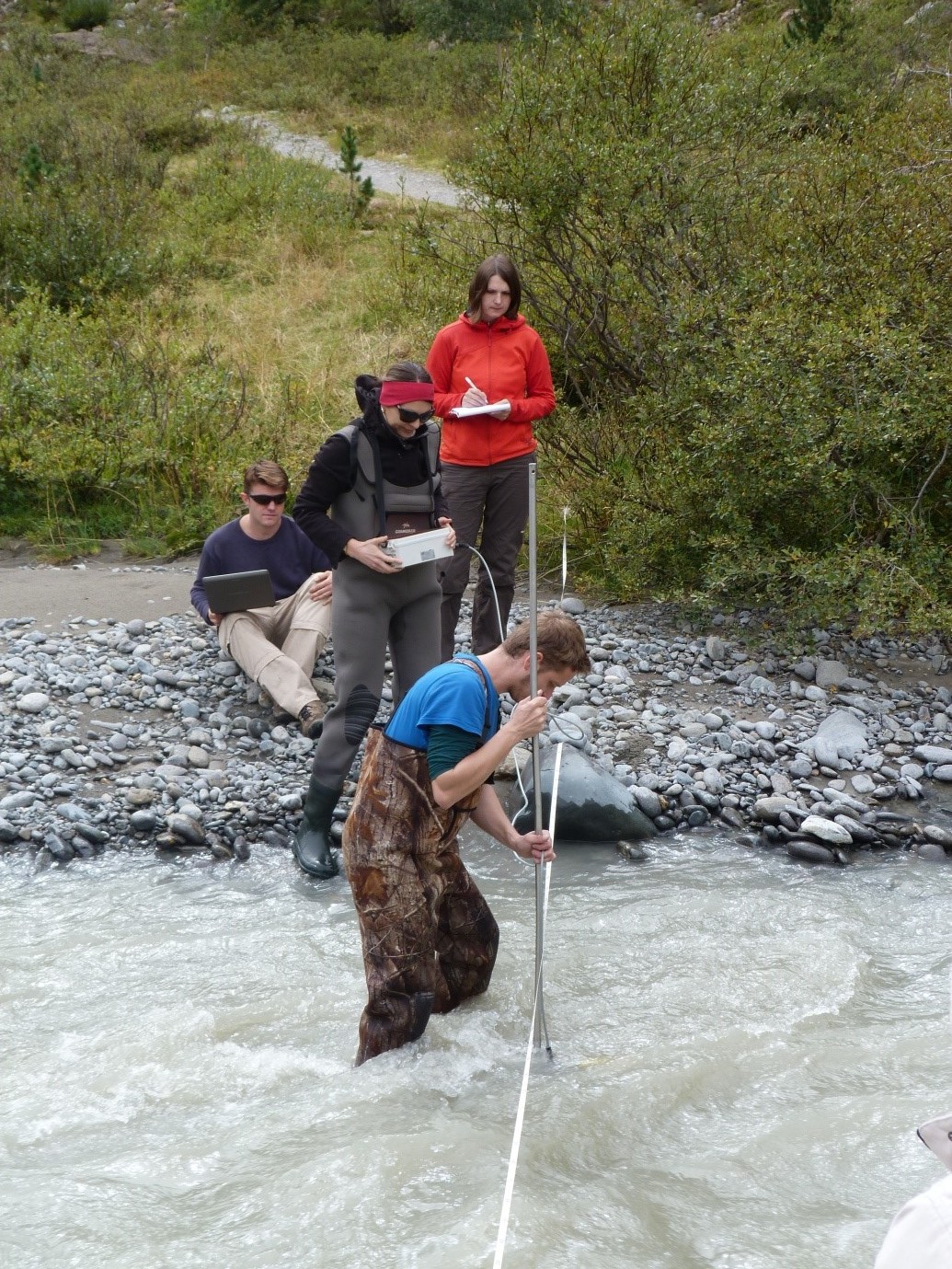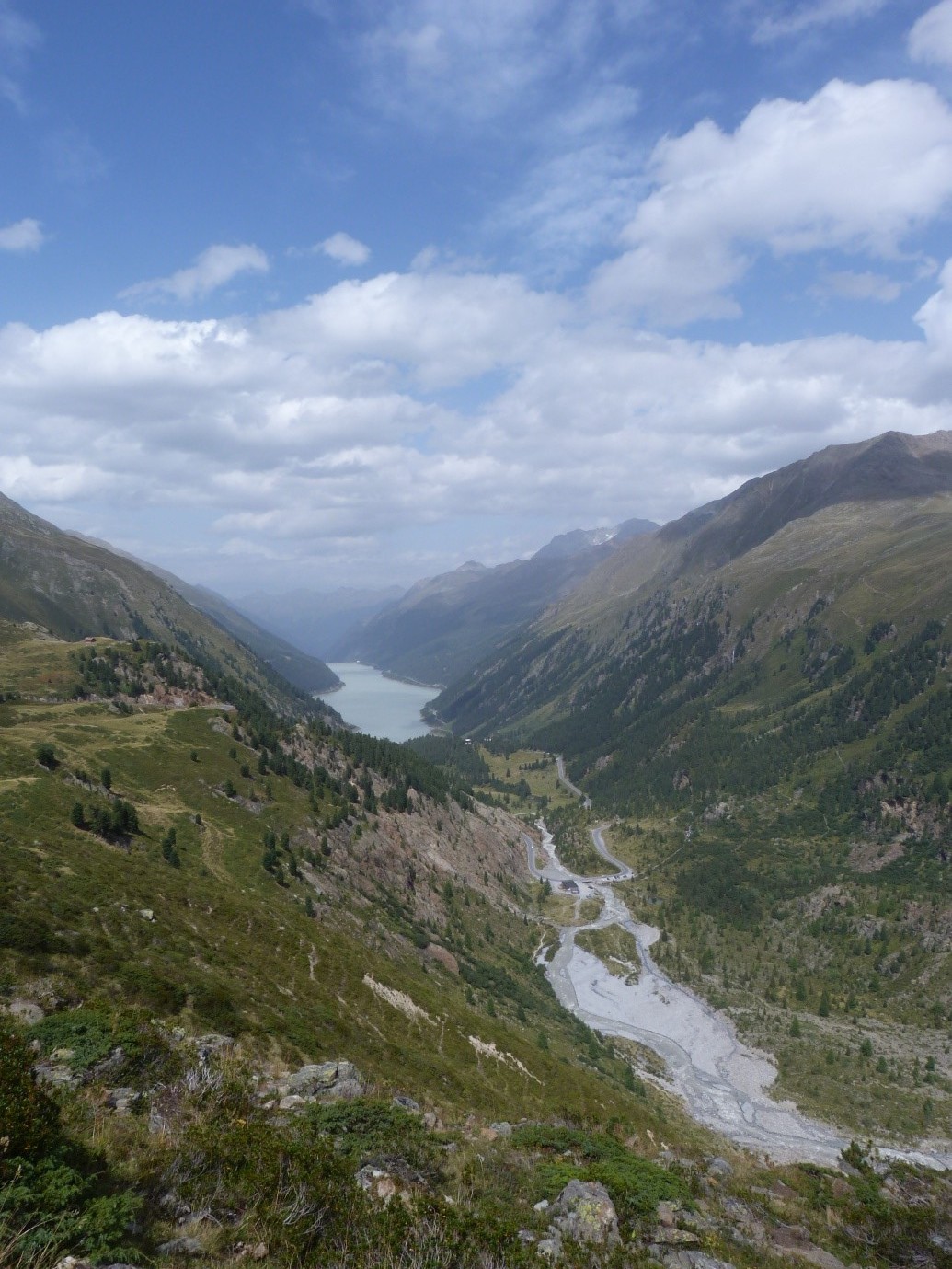Written by Ciara Fleming ( University College Dublin)
The focus of this Summer School was ‘Sediment dynamics in high mountain environments’ and as suggested by this title, the location did not disappoint. For the week-long school we were based in Feichten im Kaunertal (1273m a.s.l.), a perfectly-formed Alpine village in the Province of Tyrol, Austria. The school brought together a diverse group of geoscientists, from Europe and further afield as far away as South America, South Africa and New Zealand. Organised by a group of early career scientists based in Germany and Austria, the rationale behind the school was to combine various disciplines including geology, geochemistry, biology and environmental sciences, and educate postgraduates both in a field site setting and in subsequent workshops. Enabled by the Volkswagen Stiftung Foundation, the costs of the school were fully-funded, and as participants, we were looked after extremely well.
After some comprehensive introductory keynote lectures on the first day, we were led on a hike through the Kaunertal Valley from the Subalpine zone to the Alpine, right up to the toe of Gepatschferner, the second largest glacier in Austria, and then subsequently descended down the valley alongside the River Fagge. The scenery was such that for those of us on their first trip to the Alps, numerous pit-stops were made to take it all in, examine the landscape, talk to other participants, take some photos and of course, take a breath! The benefits of fieldwork – making your own observations, grounding concepts and theories learned in the classroom, teamwork skills and many more – were highlighted in this short reconnaissance trip.

Trail leading to Gepatschferner (in the distance), along the 1850 lateral moraine surface (Image credit: Ciara Fleming).
Over subsequent days, methods in geomorphology came to the fore. This was an excellent chance to learn about the various tools available for us to use as geomorphologists, and examine the limitations of the various methods of data acquisition. To image the sub-surface, two geophysical methods were employed – ground penetrating radar (GPR) and electrical resistivity tomography (ERT). More traditional methods of investigating geomorphological parameters included water/sediment discharge measurements and biogeomorphological vegetation/sediment sampling. Extremely high resolution digital elevation models were created using the latest equipment including a terrestrial laser scanner (TLS) and unmanned aerial vehicle (UAV). The rain descended over the hilltops on one of these days, but didn’t dampen our spirits. To my surprise, many of the participants were ready with umbrellas – being trained as a field geologist in Ireland, there is no need for an umbrella as the rain tends to sheet horizontally, rendering an umbrella rather ineffective! One of these field days ended with a quick stop at the Gepatsch Stausee (reservoir), where the Kaunertal power station harnesses energy from the glacial rivers and streams of the surrounding valleys.

Summer school participants conducting ground penetrating radar, adjacent to the River Fagge braidplain (Image credit: Ciara Fleming).

Measuring turbidity in the water column of the Riffler Creek, a tributary of the River Fagge (Image credit: Ciara Fleming).

The braidplain of the River Fagge in the foreground, with Gepatsch Stausee in the background (Image credit: Ciara Fleming).
These experiences in the field were bookended by workshops during which we processed the collected data, using various bespoke and open-source software packages. Various issues regarding real-world datasets were highlighted during these discussions, including interpretation of measurements, troubleshooting incomplete datasets, combining multiple analytical techniques among many others. These lessons are vital to us postgraduate researchers, as we will need to consider such practicalities and limitations when collecting and analysing our own field data.
On the Thursday evening, following a long day of data processing and fieldwork, we were given tips on reviewing and authoring by the editor of Earth Surface Processes & Landforms. Despite the late hour, Professor Stuart Lane was a captivating speaker, and managed to maintain the attention of his audience throughout. This was followed in the morning by an extensive talk on sediment budgets. On Friday night we were treated to some traditional Austrian hospitality and panoramic views (1962m a.s.l.) at Falkaunsalm, an Alpine hut outside Feichten. A veritable feast of Austrian fare was provided including various meats, sauerkraut and dumplings, followed by a traditional pancake dessert called Kaiserschmarrn. Many of the participants followed up with a digéstif of pine-flavoured schnapps, an overwhelming smell – it was almost like drinking a Christmas tree!

Sunset view over the Alps from Falkaunsalm, an Alpine hut outside Feichten (Image credit: Ciara Fleming).
The penultimate day consisted of the final data processing workshop followed by lectures and discussions on risk assessment and how society interacts with hazards in Alpine settings. The social evening was a welcome opportunity to relax after a busy week, and for those of us who stayed up into the wee hours, to hear some renditions of Austrian classics! Recuperating from heavy heads in the morning was eased somewhat by an excellent speaker Professor James Kirchner, discussing a very meaty topic, statistical analysis of environmental data. Before departing, a plenary session was held with the organisers to evaluate the summer school, and we all agreed it was an inspiring and scintillating experience which was efficiently organised. For me, this was a week of firsts – my first time in Germany, my first time in Austria, my first time in the Alps and I know one thing for sure – I’ll be going back!
Written by Ciara Fleming ( University College Dublin)


Pingback: GeoLog | Looking back at the EGU Blogs in 2015: welcoming new additions
Pingback: Summer School on Geomorphology 2015: Kaunertal, Austria « Landscape Processes in Antarctic Ecosystems